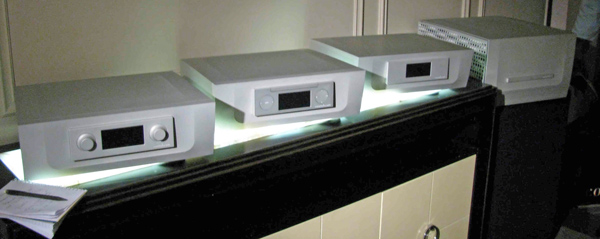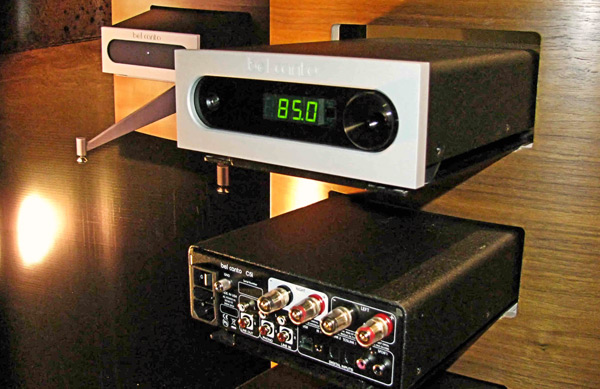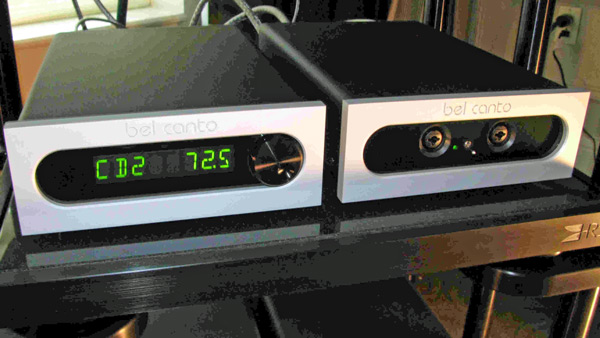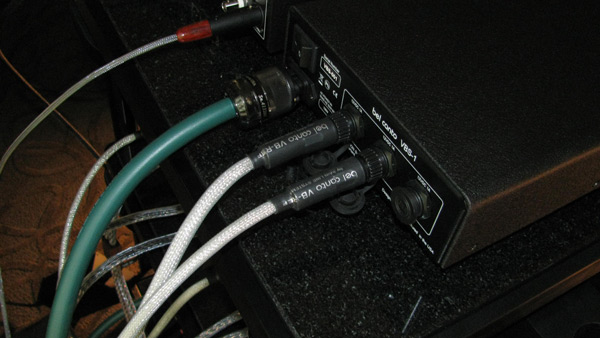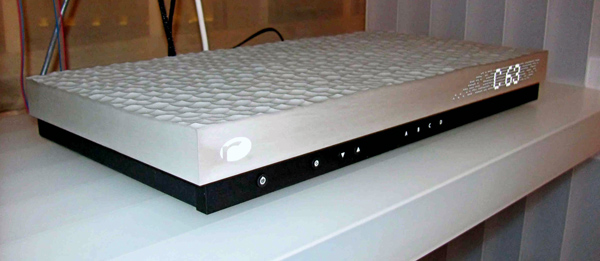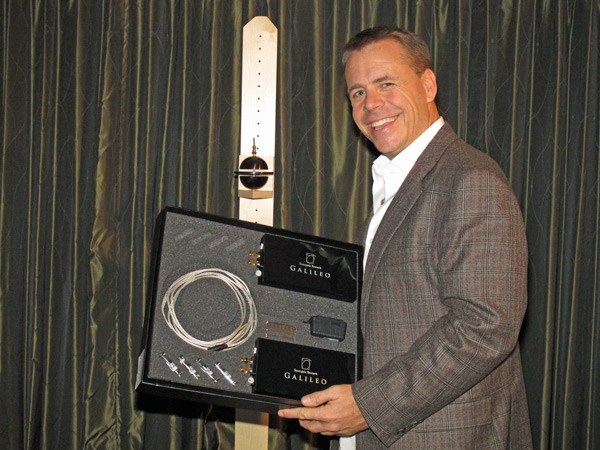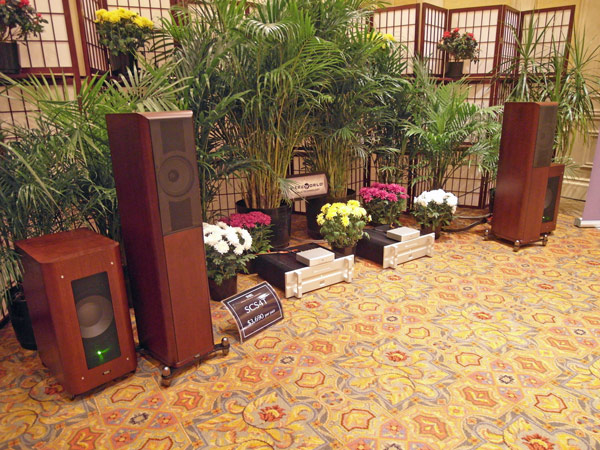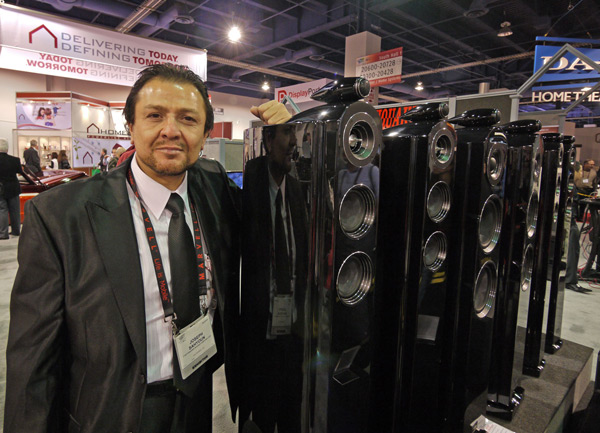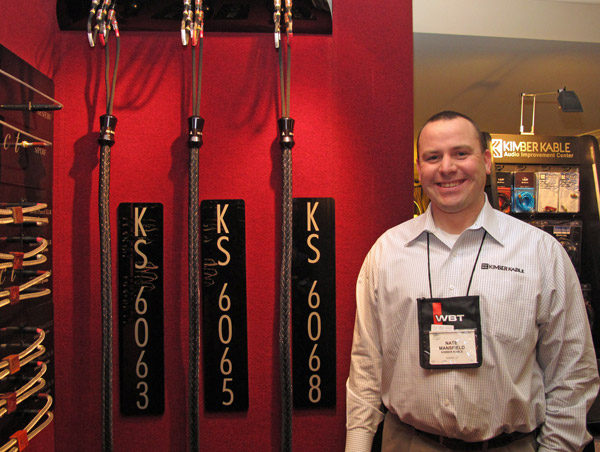LATEST ADDITIONS
New from Bel Canto
Is that a headphone amplifier?
When I checked out the back of the headphone amp I noticed that it was in the signal path of the room’s big rig. The DAC3.5VBS’s outputs went into the headphone amp and the outputs of the headphone amp went to the rig’s amplifiers. I asked John, “What gives?” He told me that he has been experimenting with using the new headphone amplifier as a unity gain buffer, taking advantage of the headphone amp’s ultra-low output impedance. John said that he hears improvements in the system using this configuration and that Bel Canto is exploring new applications for this technique. No price has yet been set for this headphone amplifier.
Bel Canto's Virtual Battery Supply
Resolution Audio’s C50 Integrated
The Plinius Hiato
Synergistic Research’s Galileo System
The Galileo System of cables includes speaker wire ($40,000/8ft pair) and interconnects ($25,000/1m pair), the PowerCell LE (limited editiononly 20 are being built for $10,000 each), and the Galileo Element series. All cables work universally, with switchable XLR and RCA terminations. If you switch gear from single-ended to balanced, you don’t have to buy an entirely new set of cables with different terminations. Very neat.
Thiel/Bryston
The Thiel/Bryston room had a system featuring the Thiel SCS4T ($3690/pair) speakers and a pair of new prototype Thiel USS subwoofers (price and delivery date TBD), partnered with Bryston electronics and digital source. The sound had that famed Thiel clarity, and an astonishing sense of depth on the well-known Misa Criolla recording. The SCS4T is the last speaker that Jim Thiel had a hand in designing: a fitting tribute to one of the greats of the world of audio.
Joseph Sahyoun’s Earthquake speakers
Case in point: the Titan Series Telesto ($7999/pair) and Tigro ($9500/pair) floor-standing loudspeakers from Earthquake, a company that until now has specialized in subwoofers. According to Earthquake President and designer of these speakers, Joseph Sahyoun, these are speakers that he actually designed several years ago, but could not build them because he was not able to get overseas the kind of molded cabinet construction that he felt was essential to get the results he wanted. The cabinets of these speakers are now made in the USA, and the drivers are also made in-house. The speakers were on passive display, so I can’t comment on the sound, but the design certainly looks like a serious effort, with a lot of attention to detail.

